 I ran into a first this week: a customer who managed to spill a can of soda across BOTH his A and Bb clarinets: it was a pitiful sight! They had sluggish keys, pads stuck to tone holes, and a nice glaze on the wood bodies. I started by disassembling and cleaning all surfaces with a Q-tip: tone-holes, keys, rods, screws, body and (especially) pads. I then dried affected parts with a soft cloth, oiled the screws and rods, and reassembled. One pad's leather actually tore loose, from the adhesive qualities of the soda, and had to be replaced! Some welcome income, but a sorry sight and one that I hope I won't be dealing with again soon.... Now, why do I bring this up? Well, soda (and other sweetened drinks) aren't just rough on the outside of your horn, they're rough on the inside, too! I used to see student instruments with sticky pads, and my boss explained that they were the victims of soda or juice consumed directly before playing, which ended up condensing on the pads. Much better to stick with water, or at least rinse your mouth after consuming a sweetened drink and BEFORE you pick up that horn! And for goodness sake, please keep that container away from your case. A word to the wise....
0 Comments
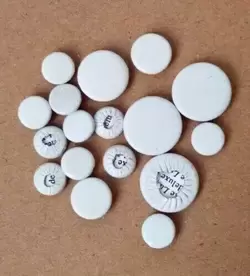 For a few years now, I've been using tan or white kidskin/rooskin pads almost exclusively on my older horns. Folks ask why, from time to time, so I thought I'd take a moment and answer some of the implicit questions: I find that they last longer than bladder and can be oiled occasionally, further extending their useful life. As an experiment, I once oiled leather pads that had been in an early R-13 for 40 years and, after softening and adjustment, the instrument played fairly well! I find that they take a better impression from aging tone holes. Slight warp-age, small nicks, uneven wear, can all be forgiven by a leather pad, which will take a better seat than the harder double skin felt pads in common use in modern horns. This often saves me having to reface a tonehole made slightly uneven from wear or abuse, which is my preference when possible: the Hippocratic Law for clarinets being "First do no harm". I find that they give closed keys a feeling more consistent with bare fingers on open holes (especially on Albert/ simple system horns) versus hard felt. I am often distracted by the difference in feel between my fingers and hard felt or cork pads; its somewhat uneven. Finally, I find that the tan kidskin shows less wear and discoloration than white bladder, keeping the horn looking fresh longer. I hope that players and other techs will consider these pads and their advantages next time they undertake the overhaul of a vintage instrument of quality! 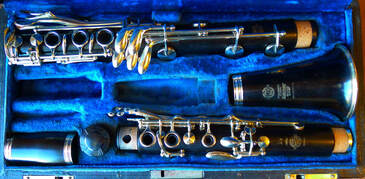 I've worked on a lot of clarinets in the last 18 years, but admit to having a soft spot for the Full Boehm system: the mechanism solves many technical issues, the tone tends to be fuller and darker (due to extra length and bore size), and, with the low Eb, they can do double duty for an A, thus saving that piddling $4k for another car! Finally, they were made as pro horns and uniformly well constructed. So, why are they so little used and rarely made? The only company I'm aware of that still offers a standard production model is Amati, which wouldn't be my first choice, given the historical instruments available.... Buffet, Selmer, Leblanc, Malerne, Penzel Mueller, Kohlert, Conn, even Rampone all made Full Boehms at one time, most of them excellent instruments. Its hard to find a customer who has seen one, a tech who has worked on one, a fingering chart for one, or even a replacement case! What do you folks see as the pros and cons of these horns and do you have any idea why they are no longer readily available? Just asking... Hi folks! Just finished this old Buffet for a customer and am completely confused as to its fingering system: it seems to be mostly Albert with some Boehm. Has anyone seen anything like this before or know anything about its origin? It plays and sounds great and I am surprised that I've never run across one before....
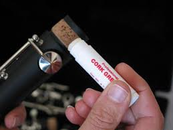 With the change of seasons, I thought it might be a good time for a vintage clarinet care post - I've been seeing a lot of dried out, neglected clarinets here in the shop! An older wood clarinet is going to need more care than a new one for best performance, and quite a bit more than that student plastic horn you used to abuse, so let's get to it! 1 - Swab it after you play, but avoid inserts. You want to get the moisture out - not put it back in! Those fuzzy inserts absorb from the body and pads, with regular use, and then it goes...right back in the clarinet! Just swab from both ends and put it away. 2 - Bore oil is your friend. I'm amazed at the number of folks I meet that don't use it and the number of horns I receive that desperately need it! Buy a good quality brand that has some natural oils (not just petroleum distillates) and a fuzzy clarinet bore swab. Put a few drops on the swab and run it through all 4 pieces of the body until you see a light 'sheen' in there: don't soak it! If the horn is really dry, it may be necessary to repeat this a few times in the first week. Eventually, once a month or so will be enough to keep it looking healthy: this will protect it from cracks and warpage and extend the useful life of your instrument! 3 - Humidify. While you don't want a damp insert holding moisture right next to your pads, you do want a little humidity in there, especially during the winter or if you live in an arid part of the country. Take a tip from the old pros and put a couple pieces of orange rind in the bell: it will make the case smell nice and protect the bell in particular from the shrinkage that loosens rings and causes cracks. 4 - Oil the mechanism. A lot of the looseness in old clarinet keys is the result of un-lubricated dirt between the key and the post being rubbed back and forth, thousands of times, until metal gradually wears away. A good way to improve movement and arrest wear is to buy a little bottle of medium key oil (I like Hetman's) with a needle fitting and hit the contact points at each end of the key with a drop, about twice a year. 5 - Watch that thermal shock! Wooden clarinets don't like dry heat, direct sun, or sudden temperature changes. Don't leave it in a car on a hot day, or march with it, or set it near a heat source. No company guarantees their horns against cracking, and I can't either! Ironically, your old clarinet will probably withstand the rigors of use better than a new one: its wood blanks were aged longer before cutting, and it has had years to stabilize since then. I see many clarinets 80+ years old that look and play great! If you take care of yours, someone might be playing it many years from now, as well.... 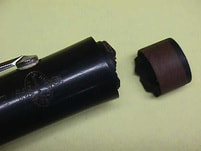 To continue: Yes, there are terrible metal and hard rubber clarinets out there: There are also hideous wood instruments, as anyone who has played a post WWII East German/Soviet made horn with pot-metal keys can attest! However, the mitigating factors always seems to be quality of construction and attention to set-up rather than the material - I offer Tom Ridenour's pro line of Hard Rubber instruments, and vintage metal instruments by Noblet, H. Bettoney or Penzel Mueller, as evidence. Tom's instruments have received a lot of kudos for pro quality detailing (like tone-hole undercutting) and, having discarded increasingly expensive and hard to find grenadilla, they are available for less than half the cost of the fabled R-13. I suspect the factors that initiated the sub-par reputation of a lot of better metal/hard rubber clarinets were: poor mouthpieces and shoddy pad work. If the mouthpieces that have come stock with a number of my acquisitions are anything to go by, Martin Frost at his best would be hard-pressed to draw good music from their narrow tips and uneven facing! Original pad-work shows signs of being equally hurried, in some cases, with cheap pads poorly seated and opening heights at the mercy of whatever cork was on sale that week. Now, take that same horn, overhaul it conscientiously with leather pads and attention to setup and play it with a decent mouthpiece and I suspect you will be pleasantly surprised! So, why grenadilla wood in the first place? I wonder about that myself, and encourage speculation from readers. Before grenadilla, boxwood and various fruitwoods were universally used for woodwind instruments but, at some point in the late 19th century, everyone switched to grenadilla. I know that it is hard, mills well, and is attractive. However, it is also slow-growing, in limited supply, and requires long seasoning for good results: according to an interview with the late Hans Moennig, when he started as a repairman in the 20's, Buffet was aging its wood blanks for over 20 years before milling. At his retirement in the early 80's, it was down to about 7 years - I don't know what it is now... Buffet's experiment with the 'Greenline' model (or 'Greenstick', as I've heard them referred to, based on how the tenons fracture) of grenadilla dust with a binder seems a promising step in a new direction but, like First Act instruments from China, further refinement would seem to be required :) I look forward to new materials and technologies to bring the clarinet into the 21st century; improving intonation and performance, lowering cost (anyone tried to buy an R13 lately?), and reducing our dependence on, and harvesting of, an endangered slow-growing hardwood. Would love to hear other ideas and perspectives on the subject: anyone feel like guest writing a column? 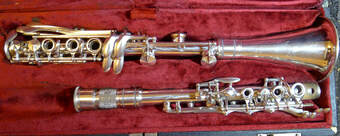 Having just enjoyed a postprandial glass of wine, I'm going to take a chance on a topic I might not otherwise address: the ostensible primacy of grenadilla wood as the clarinet construction material of choice! Now, I know that I will probably ruffle some feathers with this, but I've played (and restored) a lot of clarinets in my day and have noticed a couple things: 1) the performer's mouthpiece, reed, oral cavity, articulation, breath support and tonal concept seem to have more to do with the resultant tone than a specific clarinet, and 2) the material from which the instrument is constructed plays less of a role in its tone than the quality of said construction plus setup and its interaction with all the factors mentioned in #1. The first point is fairly easy to establish in your own practice: if you play classical music, use a narrow tip, large chamber mouthpiece with a stiff, French file cut natural reed and are channeling Reginald Kell as your Tone God, you will have approximately the same dark, focused tone on a Buffet, Leblanc or Thibouville Freres. Likewise, if you play Jazz, use a Vandoren 5JB with a 2.5 Fibracell reed, and love Peanuts Hucko, the bright, flexible tone will shine out from an Orsi to an A. Robert. The ergonomics of key-work and the back-bore pressure will vary, it is true, along with other, subtler factors, but many of these are attributable to the quality of the pad work and the interaction of your mouthpiece with the bore size/taper of the instrument at hand. A change in mouthpiece or brand of reed would result in a more noticeable change of tone! The second can only be demonstrated with access to a number of instruments over time, which access most teachers and performers don't have, unless they are the kind of hardened collector who has the luxury of both copious funds and unencumbered hours. Being exactly that type myself, I have had the chance to play a variety of wood, hard rubber, metal, and composite clarinets in different keys and different fingering systems and believe that the material has a limited impact on the tone, intonation and play-ability of the instrument. To be continued.... 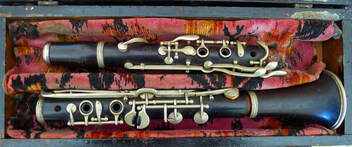 Recently, in a fit of bravery, I've been purchasing some no-name clarinets, mostly Albert systems. These golden-oldies have gotten harder to find, lately, and the big names are commanding big prices: a $1000 or more for a Buffet in good, un-restored condition, which puts it out of my 'can-risk' range! I don't buy blind, of course: I look at wood, key-work, and condition and I ask questions. And you would be surprised at some of the nice old horns that I come across! There are a number of reasons: most no-names were made by reputable manufacturers for stores, catalogs and big distributors. If it says 'made in France' and its from the 20's-50's, chances are good that it was a Buffet, Thibouville Freres, Martin Freres, Couesnon, Malerne, or SML. If it was 'made in Italy', a Rampone or Orsi. If 'made in Germany', a Gebr. Moennig or one of a host of excellent (if lesser known) makers from Markneukirchen - not a bad pedigree! Also, this was the Era of the Clarinet and a poor make didn't stand much of a chance against the flood of reasonably priced, quality instruments on the market. Compare this to today's spate of First Act, Borg, and other marginal junk instruments - they wouldn't have stood a chance 80 years ago! Even some of the old French and American stencil hard rubber or metal instruments play surprisingly well, with a good overhaul and decent mouthpiece. So, don't be scared of an inexpensive old no-name for personal use. Compare key-work for similarities to known brands (hint: the shape of the lower stack bridge key is a giveaway to at least 3 makers), look for dark wood with a tight grain and pro features (like post lock-downs) and ask Ask ASK questions : are there cracks, ugly repairs, frozen/rusted keys, etc. With practice and a little luck, you can have a fine horn for practically the cost of the overhaul and save another piece of craftsmanship from the junk-pile....  Recently, I posted a blog on Thibouville Freres clarinets, (an obscure French brand with which I've always had good luck), and it got me thinking about all the good playing horns I've handled in the last decade, and how many of them weren't Buffets or Selmers. Just yesterday I finished this 1920's Pruefer 7 ring - obviously a pro instrument - and was really impressed: Great wood, well shaped keys, nicely assembly touches (like post locks on the lower stack), a large bore and an even, free-blowing response. Why spend $2600 if you can get something like this for less than $500? I wish there were more people out there on the net giving thumbs - up to good old makes like this, so people would have the courage to step up and try something different. Does anyone else have a similar experience ? One of the clarinet makers I watch for these days is Thibouville Freres, a French company based in Ivry-la-Bataille from pre-1913-1974; sub-contractors for numerous makers and resellers (also seen as JTL or Jerome Thibouville Lamy). Most of the instruments that I see seems to date from the 40's - 60's (based on case, design elements, etc). These restore to be some truly fine playing horns, with nice design features and a slightly larger than standard bore. I've sold them to Jazz/Klezmer musicians and others of uncertain affiliation, always with happy results!
The nicest one I've ever seen was an 'Artist' model that I bought from Goodwill for about 75 dollars! It was a large bore pro horn with all tenons metal capped and sockets metal lined, a metal lined barrel, and 7 rings. After a full overhaul, it was a wonderful player with a fat, 'vintage' tone and good intonation, ideal for Jazz or Classical, depending on choice of mouthpiece. I do notice, BTW, that mouthpiece seems to be a critical factor: a customer of mine who had purchased one last year (and reported being unimpressed) called me recently, raving about its tone and playability with a change of mouthpiece. Maybe that made all the difference, or maybe he's been practicing more, who knows ? Thibouville Freres also made nice bass clarinets (under their own name and as stencils, I believe), and was responsible for building some or all of the McIntyre system instruments that I've seen. Does anyone else have experience to report with this company's instruments and any idea why they aren't a whole lot more famous? |
Archives
February 2024
AuthorThe Licorice Shtick Blog is the creation of the Vintage Clarinet Doctor, a Winston Salem, NC based woodwind instrument repair shop specializing in vintage and antique clarinets, saxophones, and the occasional flute. Categories |
- Home
- Before and After
- Contact Us
- Learn
-
Shop
-
Clarinets
>
- Vintage A. Bonneville Albert System Clarinet
- Vintage Jean Cartier Professional Bb Boehm Clarinet
- Vintage Conn 424N Bb Boehm Clarinet
- Vintage Couesnon & Cie A Paris Bb Boehm Clarinet
- Vintage Louis Delmat Bb Albert System Clarinet
- Vintage R. Malerne Custom Bb Boehm Clarinet
- Vintage Malerne Professional Bb Boehm Clarinet
- Vintage R. Malerne Standard Bb Boehm Clarinet
- Vintage Paris Selmer Eb Contra Alto Clarinet
- Vintage Stubbins Noblet Bb Boehm Clarinet
- Flutes >
- Mouthpieces
- Saxophones >
-
Clarinets
>
- Services
- Testimonials
- Home
- Before and After
- Contact Us
- Learn
-
Shop
-
Clarinets
>
- Vintage A. Bonneville Albert System Clarinet
- Vintage Jean Cartier Professional Bb Boehm Clarinet
- Vintage Conn 424N Bb Boehm Clarinet
- Vintage Couesnon & Cie A Paris Bb Boehm Clarinet
- Vintage Louis Delmat Bb Albert System Clarinet
- Vintage R. Malerne Custom Bb Boehm Clarinet
- Vintage Malerne Professional Bb Boehm Clarinet
- Vintage R. Malerne Standard Bb Boehm Clarinet
- Vintage Paris Selmer Eb Contra Alto Clarinet
- Vintage Stubbins Noblet Bb Boehm Clarinet
- Flutes >
- Mouthpieces
- Saxophones >
-
Clarinets
>
- Services
- Testimonials
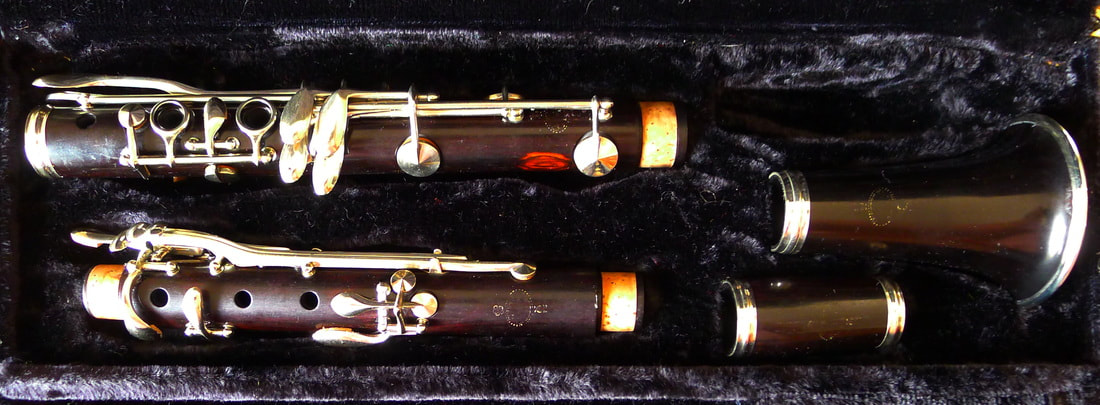
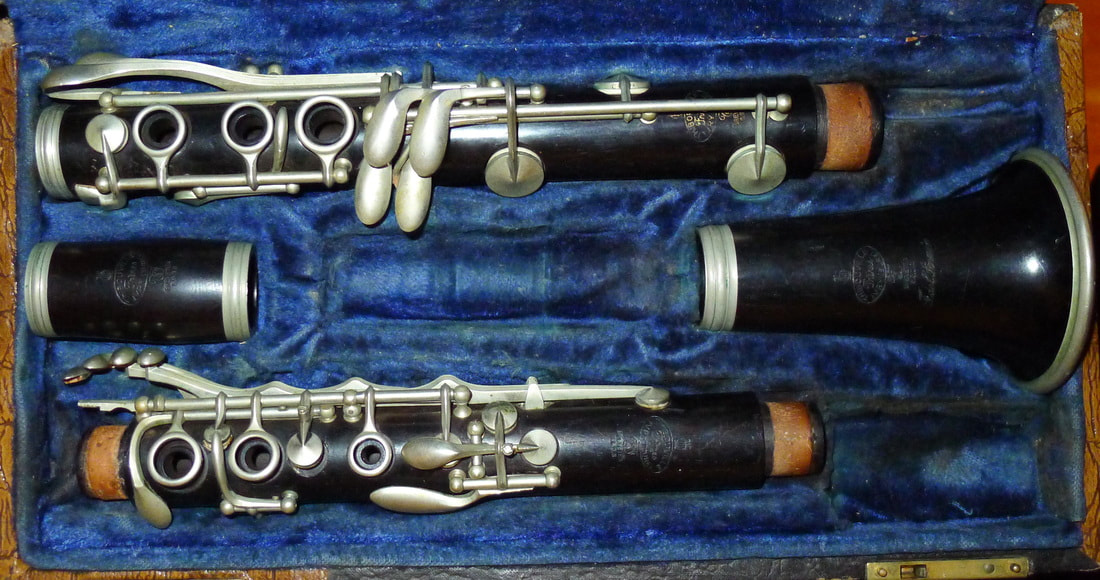
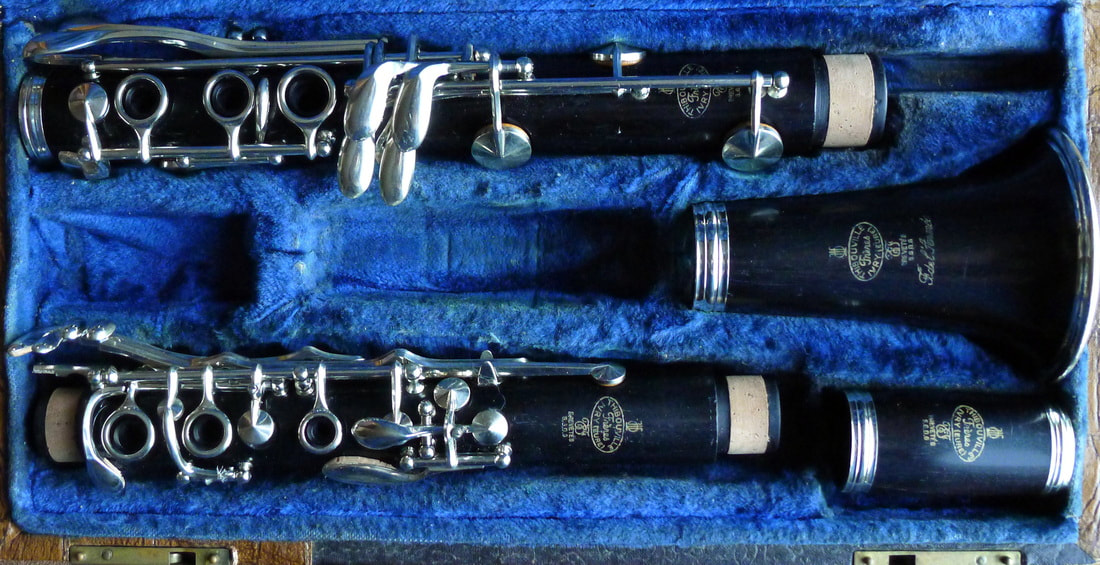
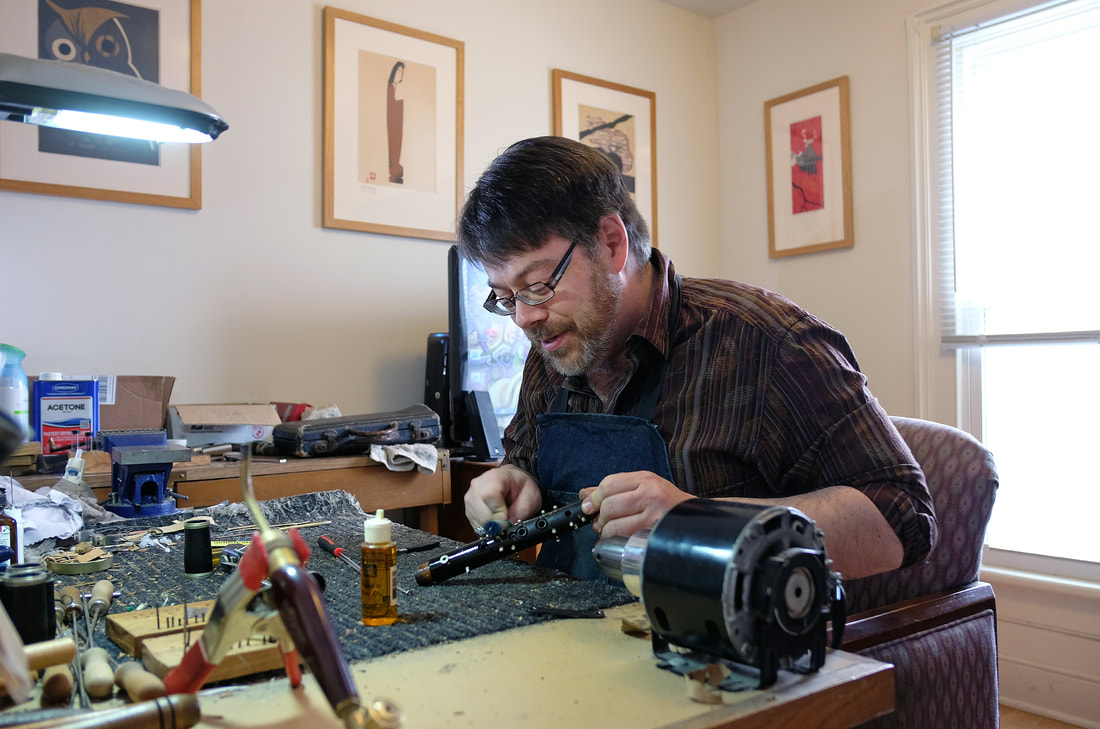
 RSS Feed
RSS Feed
